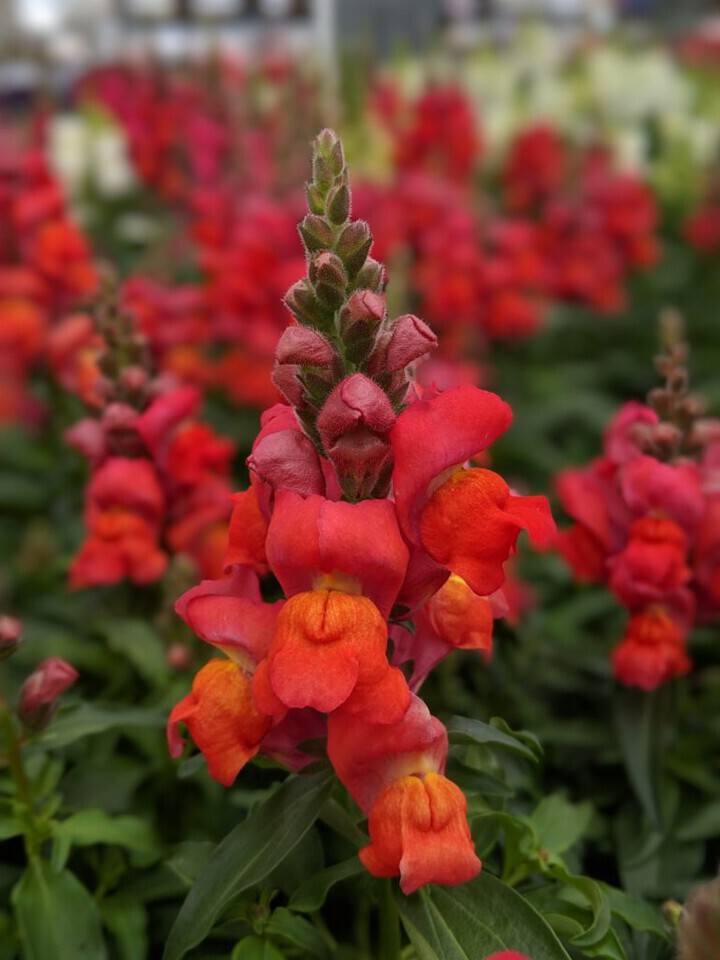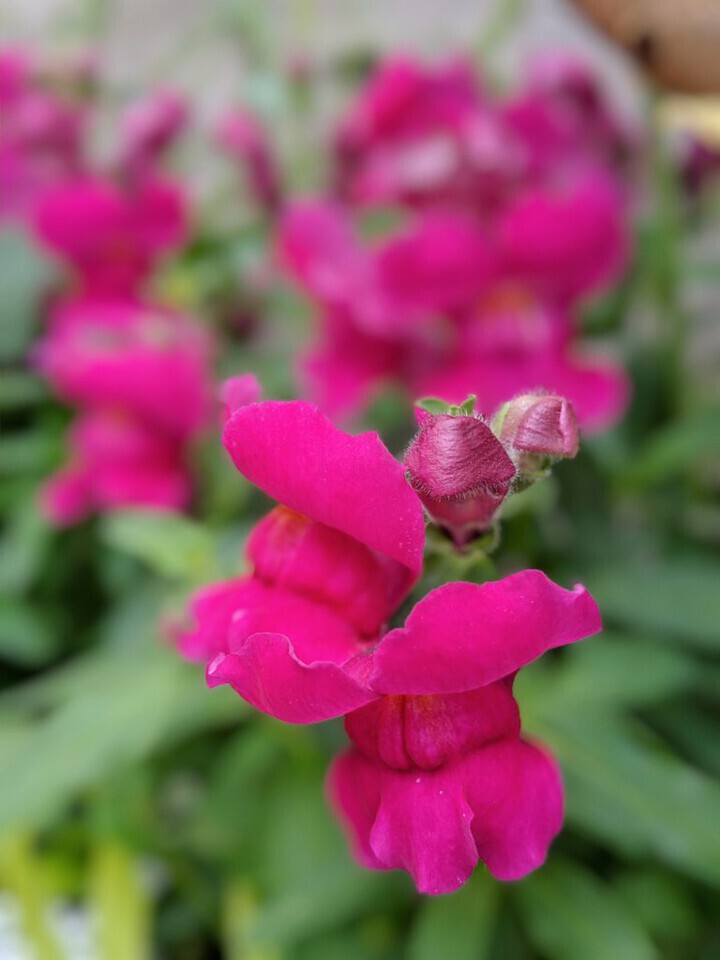Scientific Name: Antirrhinum majus
Common Name: Snapdragon
Common Species/Varieties: Rocket, Candy Tops
Common Colors: Available in most colors but white, yellow, and red are most common
Plant Type: Flower
Annual or Perennial: Perennial grown as Annual
Hardiness Zone: 7-11 USDA
Self-Seeding: Yes
Bloom Season: Spring through Fall
Grows Best In: Full sun or part shade
Fun Fact: Snapdragon seed pods look like tiny skulls, and are filled with many tiny seeds.

Snapdragons are aptly named for their appearance – they look like tiny colorful heads with yawning mouths. These mouths are difficult to pry open, so smaller insects are not able to pollinate them, but their colorful appearance is likely to help attract pollinators of all kinds to their location. Snapdragon will bloom in a big way in early Spring and in Fall, but don’t worry if the blooms slow down in the heat of summer. Watch for their trademark skull shaped seed pods as flowers begin to die, and pick them before seeds begin to ripen if you’re not looking for Snapdragons to volunteer in your garden the following season. Snapdragon plants typically grow taller than they do wider, but a bushier plant can be achieved by cutting back the stems a bit. Taller varieties might require the support of a stake. Snapdragons should be watered at the standard rate of about one inch of water per week. Deer are not fond of Snapdragons, so they can be planted near gardens where deer are a concern to help keep them away (combine them with Marigold for an extra boost of deer protection).
Snapdragons are not just beautiful in the garden. They make a lovely cut flower, and the blooms are edible. Freeze them in ice cubes for an added touch of color in your favorite drinks. These colorful blossoms are frequently found in “English” or “Cottage” style gardens, and are available in sizes from small to giant. In English folklore, magicians believed that Snapdragons had the ability to break curses. In Germany, Snapdragons were placed above a baby’s crib to keep it safe from evil spirits.

Snapdragons can be prone to Aphids, so keep them away from roses and other plants that are also susceptible to aphids. Grow near Chives to help keep aphids at bay.